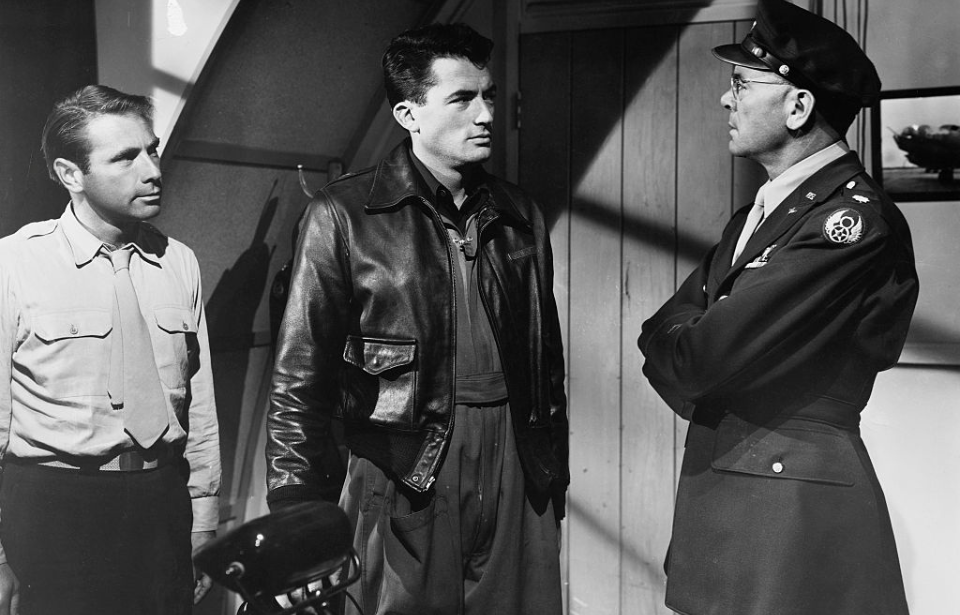We live in a world where CGI is commonplace in movies. It’s actually become a selling point to say that flight sequences, such as those in the 2022 film, Top Gun: Maverick, were all real. Before CGI, scenes that featured aircraft were almost entirely real. The Boeing B-17G Flying Fortress crash in 1949’s Twelve O’Clock High, for example, is among those that thrilled audiences in this way.
Twelve O’Clock High (1949)

Twelve O’Clock High is a 1949 Academy Award-nominated war film directed by Henry King, starring Gregory Peck. Set during World War II, it tells the gripping story of the fictional 918th Bombardment Group of the US Army Air Forces (USAAF). The movie explores the psychological and physical toll of aerial warfare on the bomber crews and their leaders.
The narrative centers around Gen. Frank Savage, who’s given command of the struggling 918th Bomb Group, stationed in the United Kingdom. The group has been suffering heavy losses, and morale is low. Savage, a no-nonsense and disciplined officer, realizes the need for a drastic change in order to turn the unit around and make it an effective fighting force.
He faces the challenging task of instilling discipline, motivation and a sense of purpose among the bomber crews. He introduces strict training regimens, enforces military discipline and demands excellence from his men. While Savage’s methods are initially met with resistance and resentment, he gradually gains the respect and loyalty of the group as they witness the positive impact of his leadership.
Throughout Twelve O’Clock High, the toll of combat and the emotional strain on the crews are vividly depicted. The film delves into the personal struggles and sacrifices made by the men, portraying the fear and trauma they experience during their perilous missions.
Twelve O’Clock High is not just a war film – it explores themes of leadership, duty, sacrifice and the human cost of conflict. Peck delivers a powerful performance as Savage, portraying the complexities of a leader torn between his duty and the well-being of his men.
Crash-landing on the set of Twelve O’Clock High (1949)

In the opening of Twelve O’Clock High, a B-17G Flying Fortress crash-lands, representing the losses the 918th Bomb Group had been suffering. The footage shown in the film wasn’t a model being controlled by wires, nor was it archival footage from WWII. The B-17G was real, and it was purposely crashed during production. The only change made to the bomber before the stunt was the removal of its bottom turret, which was done to reduce the risk of structural damage.
Stunt pilot Paul Mantz was paid $4,500 (worth over $53,000 today) to fly and crash-land the aircraft on-film. This was, up until the 1970s, the largest sum paid to a stuntman to perform a single stunt.
More from us: The B-17 Tail Gunner Who Continued to Fight, Even After Being Shot Down
The stunt and subsequent scene turned out perfectly. The B-17G came in low over the ground. When touching down, it skidded across the grass and through a couple of tents, before slowly coming to a stop. Mantz walked away without a scratch.
